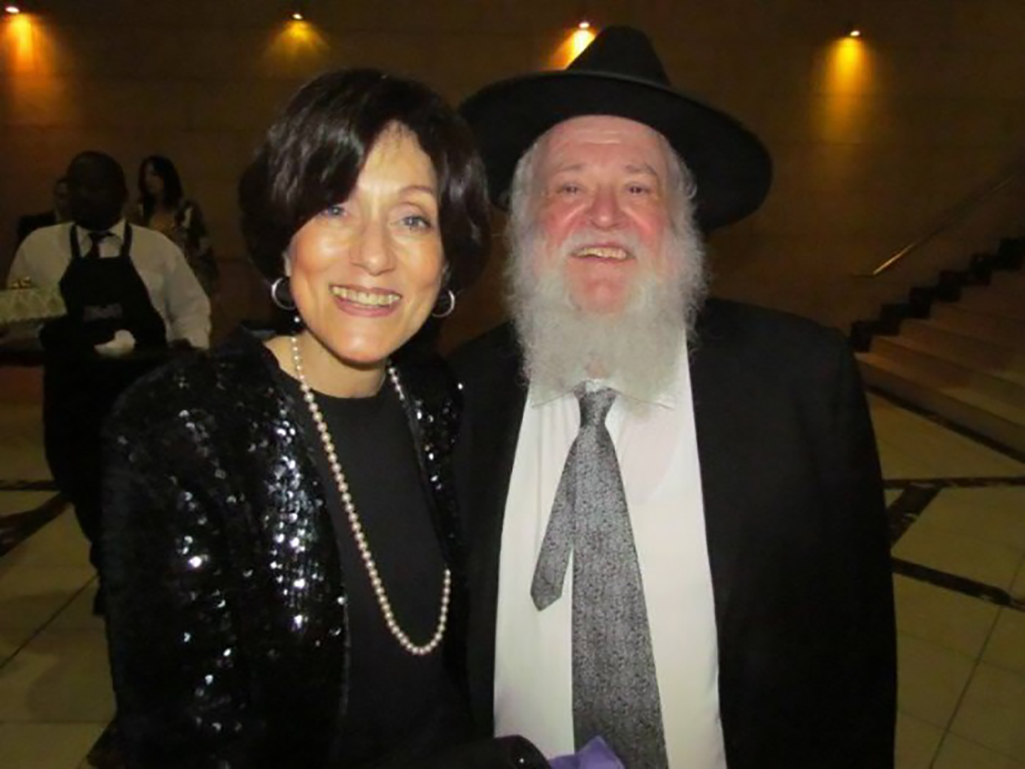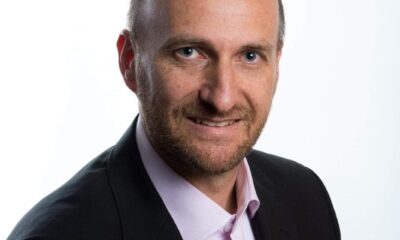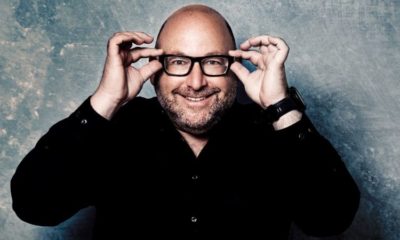
Community

Lipskars celebrate 50 years of following their calling
Fifty years after being sent as the first Chabad emissary to South Africa, Rabbi Mendel and Rebbetzin Mashi Lipskar are being recognised for transforming this community.
“They are an inspiration to me and Gina personally and to so many across our community,” says Chief Rabbi Dr Warren Goldstein.
“Their leadership and service to South African Jewry has been a beacon of light and wisdom, of positivity and boldness, of compassion and kindness. Through their relentless commitment and love, they have made and continue to make an historic contribution to the flourishing of our community by bringing us all closer to Hashem and His Torah.”
This week marks half a century since the rebbe, Rabbi Menachem M. Schneerson of righteous memory, sent a young Rabbi Lipskar and his wife to South Africa. He was the first Chabad rabbi to be sent as a shaliach (emissary) to southern Africa.
“It’s been a wonderful 50 years, which is a lifetime,” says Lipskar. “We have seen tremendous growth and development. It wouldn’t be honest if I didn’t say we’re exceedingly proud of what Chabad Lubavitch accomplished here in South Africa.”
The Lipskars were in their early 20s when they arrived in apartheid South Africa in 1972. They had never been to the country before, and the political system was completely foreign to them.
They immediately got started in turning the Chassidim Shul in what was then Harrow Road in Yeoville, Johannesburg, into a beacon of Yiddishkeit. Hundreds of Jews, young and old, went there for inspiration.
The first Chabad House, which the Lipskars opened in Harley Street, Yeoville, became a centre of Jewish activity and education.
Today, Chabad in South Africa has shuls, schools, and a Yeshiva Gedolah. There are 20 Chabad Centres and more than 60 shluchim of the rebbe in the country.
Lipskar is the head of Chabad Lubavitch in South Africa, the rabbi of the shul at Hyde Park, former chairperson of the Rabbinical Association, and the founder of Torah Academy. He’s known as a charismatic orator with the ability to inspire audiences with passion and purpose. He’s a husband, the father of nine children, a grandfather, and great-grandfather.
A few months before the Lipskars married, a position for a rabbi became available at the then popular Chassidim Shul on Harrow Road. Rabbi Koppel Bacher, a qualified Chabad rabbi living in Johannesburg, opted to work in his family business rather than become a congregational rabbi. But he was determined that an official Chabad office should be opened in this country. He made this known to the rebbe whenever he could.
Bacher had initially gone to the Chabad Yeshiva in New York in 1955 when he was just 14. Nine years later, he returned to South Africa with the intention of creating what he called “a Jewish environment” in Johannesburg. He saw his opportunity at the Chassidim Shul.
In the United States, the rebbe put word out that he wanted someone who was prepared for this challenge. Lipskar and his betrothed put up their hands.
“The rebbe told us, ‘With my blessing, you should go and establish and develop Chabad Lubavitch in southern Africa’,” says Lipskar.
Bacher brought them to the country and financed their start-up. “I used to go every year to the rebbe and I have since brought lots of rabbis here,” he says. In addition to the Lipskars, Bacher also brought shluchim such as Rabbi Yossy Goldman to South Africa.
Being an emissary of the rebbe isn’t seen as a job, Bacher says. Lipskar, who grew up in Toronto, comes from a Lubavitch family rooted in the tradition and history of Chabad, so he wanted to become a shaliach. “So I didn’t have to convince him much,” says Bacher. “The rebbe has 5 000 shluchim all over the world today because they are brought up with this desire to fulfil the rebbe’s wish to go to places and build Yiddishkeit.”
Lipskar says he was a bit worried about coming to South Africa where there were no Chabad rabbis and there was a political system in place that they didn’t understand. “Rabbi Bacher and a couple of other rabbis were here, so there was some sort of a presence. I was concerned that it was a different type of community. I had no idea what it was like before I came here.
“Though we didn’t understand the political system, we tried to improvise as best as possible within its limitations.”
“Mendel would walk the streets of Hillbrow,” recalls the rebbetzin. “We were so young. Hashem gifted us with wisdom, but one would consult with the rebbe and not make decisions on one’s own.”
Lipskar says it wasn’t too difficult to adjust to life in South Africa. “For a Jew, particularly an observant Jew, to come to a place and find other observant Jews is in itself immediately welcoming. The warmth of South African Jews is unique throughout the world.”
“The other beautiful thing when we first came here in 1972 was the fact that there was no television. Social interaction was the order of the day. We made a lot of good friends relatively quickly, and that helped us to settle in.”
Just before the Soweto uprising in 1976, Lipskar was joined in South Africa by his friend from the Yeshiva in New York, Rabbi Goldman. The rebbe had chosen to send Goldman to South Africa. Lipskar had already been encouraging Goldman about coming to the country.
“He said it’s a beautiful community with tremendous potential for spiritual growth,” recalls Goldman.
When Goldman arrived in the country with his wife and their two sons, most South Africans thought they were mad. “But the rebbe was telling people there was no need to panic or emigrate, and he backed up his reassurances by sending his students here with their families,” says Goldman.
South Africa’s political situation was becoming more tense, and the rand was depreciating, meaning overseas rabbis were reluctant to come to the country. “Chabad filled that gap most significantly,” says Goldman. “Today, thank G-d, we have many home-grown rabbis and rebbetzins.”
Goldman worked closely with Lipskar for 10 years. “I was the director of the first Chabad House in Yeoville,” says Goldman. “We both had our offices there. He gave me lots of space and room for initiative, but I always valued his insight and advice.”
When Nelson Mandela’s release from prison was imminent, the South African Jewish community was nervous about how the country might change.
“Rabbi Bacher visited the rebbe in New York and mentioned this,” recalls Lipskar. “The rebbe said, ‘It will be good there till Moshiach, and better after Moshiach comes.’ Although there were tremendous challenging moments, such as in 1976, the rebbe kept on reassuring the community and part of our role was to deliver that message. Though many people decided to emigrate to different parts of the world, some making aliya, many remained because of the rebbe’s reassurances.”
Lipskar says the Jewish community has certainly became smaller over the years. “One doesn’t feel it as much as one would in other places where you don’t have the infrastructure that you have here. For instance, you have the Chevrah Kadisha, Hatzolah, many shuls, and Jewish schools.
“Fifty years ago, South Africa was a very different place, not only because the community was larger, but it was a very different type of community. It was an extremely traditional community. People went to shul on a Friday night a lot more than they do today. There was a natural respect for religious observance. The tragedy was the tremendous ignorance about things Jewish. We felt that one of the first things that we had to do was to create an awareness of those things.”
The Lipskars dedicated a lot of time towards contacting young people, inviting them for Shabbat. “We had classes and we had all sorts of activities,” recalls Lipskar. “We had Lag B’Omer parades. A thousand people would come to the giant Chanukah menorah.”
This all became part of the revival of Jewish life, says Lipskar. “We soon brought out shluchim to Cape Town. We started a play school which developed into Torah Academy. The rest is history.”
“In South Africa, the vast majority of the Jewish community comes from a baal teshuva environment [secular Jews who return to religious Judaism],” says Lipskar. “We were involved in bringing that into being. Young and old were brought into a passionate, vibrant, and committed Jewish way of life that the country didn’t have before.”
But the Lipskars aren’t resting on their laurels. “The emphasis isn’t so much to reflect upon the past – which we do with tremendous pride and joy – but to look to the future and see what else needs to be done,” they say.










